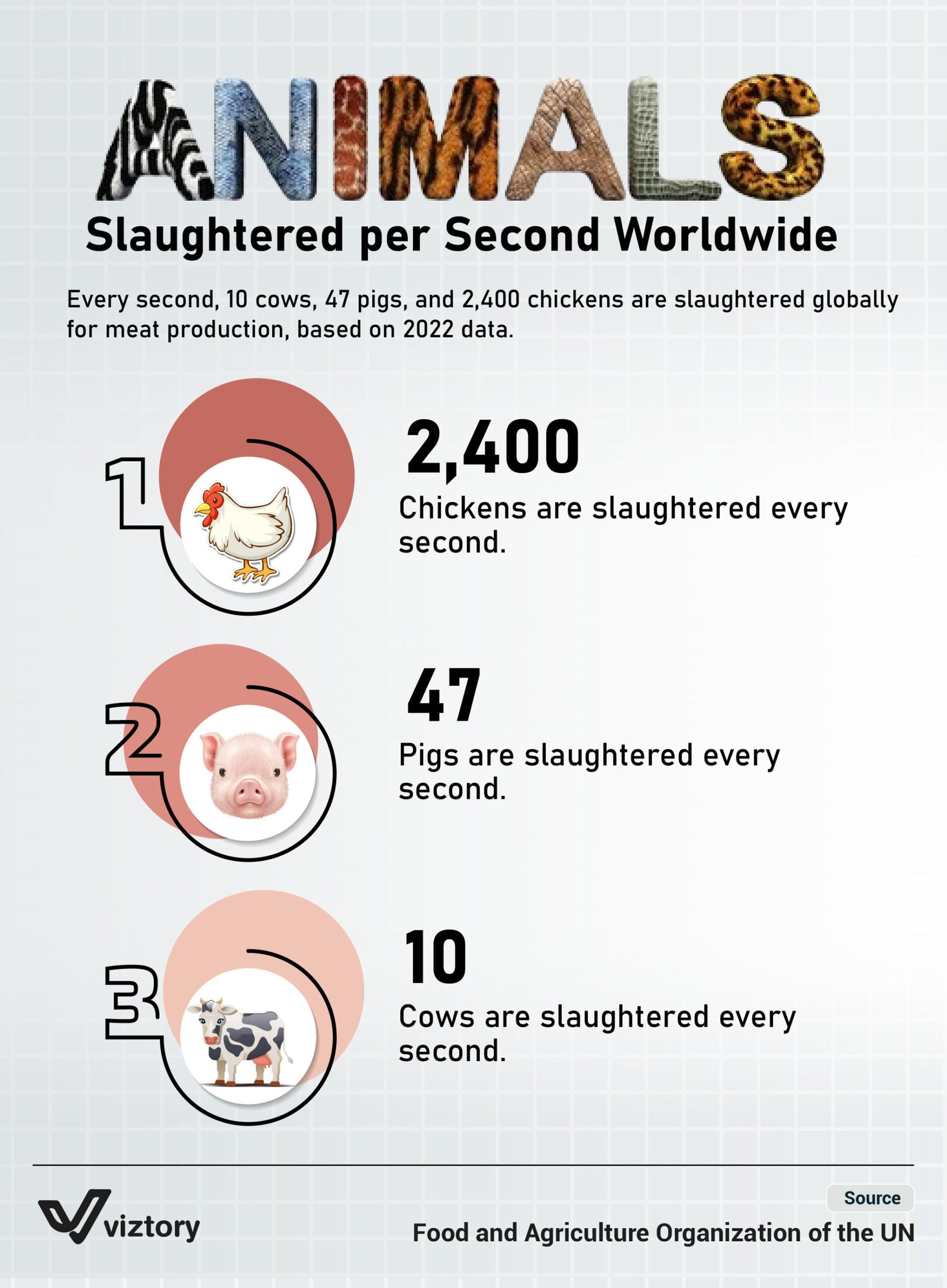Animals Slaughtered Per Second Worldwide
-
Jan, Sun, 2025
Every second, 2,400 chickens, 47 pigs, and 10 cows are slaughtered globally for meat production. This staggering statistic, based on 2022 data from the Food and Agriculture Organization of the UN, underscores the scale of global meat consumption and its direct impact on healthcare, nutrition, and sustainability.
The Role of Meat in Global Nutrition
Animal-based proteins, derived from chickens, pigs, and cows, are a primary source of essential nutrients for billions of people worldwide. They provide high-quality protein, vitamins (like B12), and minerals (such as iron and zinc) that are critical for growth, immune function, and overall health. For many developing nations, meat production ensures food security, reduces malnutrition, and supports healthy development, particularly for children and pregnant women.
However, the growing demand for meat has health implications that need to be addressed globally.
Public Health Concerns Linked to Meat Consumption
Overconsumption and Chronic Diseases
While moderate meat consumption has nutritional benefits, excessive intake—especially of red and processed meats—has been linked to health conditions such as:- Cardiovascular diseases
- Obesity
- Type 2 diabetes
- Certain types of cancer (e.g., colorectal cancer)
The high saturated fat and cholesterol content in red meats, coupled with modern diets, raises concerns about its long-term health effects.
Zoonotic Diseases
The large-scale slaughter of animals increases the risk of zoonotic diseases—illnesses that jump from animals to humans. Diseases like swine flu and avian flu are examples of how close human-animal interaction in meat production can pose significant public health risks.Antibiotic Resistance
The use of antibiotics in livestock to promote growth and prevent disease contributes to the emergence of antibiotic-resistant bacteria. This is a growing challenge for global healthcare systems, as infections caused by resistant bacteria are harder to treat, leading to higher mortality rates.Worker Health in Meat Processing
The high-speed, intensive conditions in slaughterhouses expose workers to injuries, long-term physical strain, and mental health challenges. Many low-income workers in these industries face barriers to accessing healthcare for job-related ailments.
Sustainable Meat Production and Healthier Choices
To balance meat production with public health, several strategies are being implemented and explored:
- Encouraging Balanced Diets: Public health campaigns promote reduced meat consumption and encourage plant-based alternatives, which are lower in saturated fats and cholesterol.
- Investing in Alternative Proteins: The rise of lab-grown meat and plant-based products offers a way to meet global protein demands while minimizing the health and environmental costs of traditional meat production.
- Improving Livestock Practices: Implementing ethical and sustainable practices, such as reducing antibiotic use and improving animal welfare, can mitigate health risks and enhance food safety.
- Education and Awareness: Governments and NGOs are working to educate populations about the health impacts of excessive meat consumption and the benefits of incorporating diverse protein sources into diets.
Conclusion
The scale of animal slaughter for meat production, as illustrated in the infographic, reflects a growing global dependency on meat as a primary food source. While it addresses nutritional needs, it also presents significant challenges to global healthcare systems, from chronic diseases to emerging zoonotic risks. Achieving a balance between nutritional needs, public health, and sustainable production is essential for fostering healthier societies and preserving our planet for future generations.

